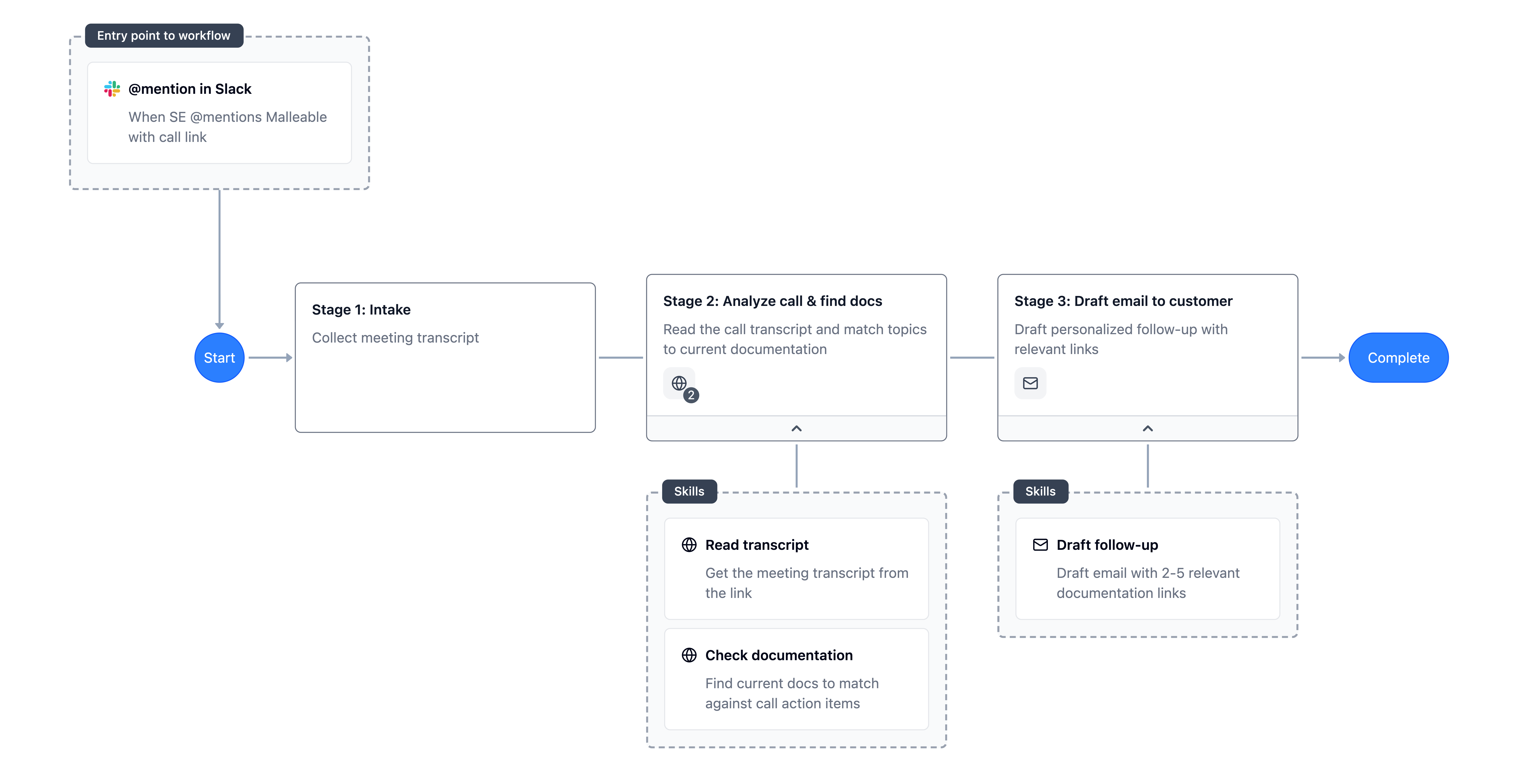Software that
evolves through use
Workflows for your team, defined by outcomes.
The Problem
Fast-growing teams outpace their operations. You're stuck between rigid tools that break when your process changes, duct-taped point solutions that don't talk to each other, and costly custom builds your team doesn't have time for.
Traditional workflow tools force you to choose: simple but inflexible, or powerful but brittle.
The diagram is your workflow
No hidden code generation. No "no-code" facade that still requires you to think like an engineer. The visual workflow you see is exactly what executes.

Why this matters
Most tools force you to choose between ease of use and power. The agentic runtime gives you both by handling the complexity for you.
Understand what's happening
The diagram isn't just a visualization, it is the workflow. Click any node to see exactly how it's configured.
Handles the unexpected
The runtime adapts to context, handling edge cases that would break traditional tools by understanding intent.
Learn as you go
Start simple and add constraints over time. No need to specify everything perfectly upfront.
Focus on outcomes, not implementation
Read more about the three layersLayer 1: Why (Goals)
What you're trying to achieve and what success looks like. You define this high-level intent.
Layer 2: What (Structure)
The stages and requirements. You sketch it out with the "Architect" agent, like whiteboarding with a colleague who asks clarifying questions.
Layer 3: How (Implementation)
The technical execution. The "Runtime" agent figures this out dynamically, so it never goes out of date.
Why (Goals)
What (Structure)
How (Implementation)
Learn and adapt as you go
Workflows shouldn't be built once and frozen. They should evolve as your team learns and your business changes.
The organizational intelligence accumulates in the workflow itself, not just in people's heads.
Ready to try Malleable?
Join fast-growing companies using AI to transform how their teams work.
Every piece of software forces you to learn its way of working. What if software learned yours instead?